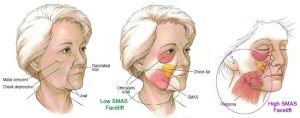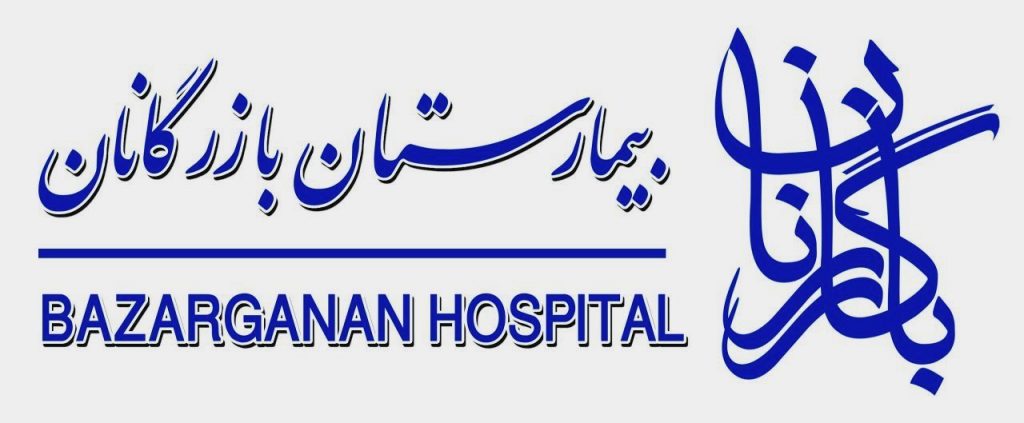SMAS Facelift Surgery
There are a number of types of facelift. Traditional facelift procedures lift the skin without lifting the underlying muscles of the face. This can lead to a very tight, pulled look in the face. Results can also not be long lasting.
The SMAS facelift is a type of facelift that lifts the underlying muscle plane of the face which sits underneath the skin. The word SMAS is an acronym for this muscle plane and stands for the Superficial Musculo Aponeurotic System. As we age, the SMAS layer starts to loosen and descend down the face and into the neck. This causes droopy brows, prominient nasolabial folds, Marionette lines, jowls and loose skin and muscle bands in the neck.
A SMAS facelift creates very natural results. The skin appears smooth youthful and full rather than pulled tight and thin. Most people who are looking into a facelift want to look younger but do not want to look like they have had a facelift. The SMAS facelift technique can achieve this.
SMAS anatomy
The SMAS is a fibrous and muscle layer that begins high up in the cheek and in front of the ear. It then extends downwards enveloping the muscles of facial expression, the facial fat pads, cheeks and continues down into the jawline and neck. It includes the platysma muscle in the neck. As the platysma muscle droops with ageing it can create vertical bands and a “turkey neck” type appearance.
The SMAS layer sits below a thin layer of fat and skin. The purpose of the SMAS is to assist the muscles of facial expression in moving normally and to remain in the correct position.

SMAS Plication Facelift, SMAS Imbrication Facelift, Extended SMAS Facelift, High SMAS Facelift, Deep plane facelift
There are five main types of SMAS facelift – the plication, imbrication, extended, high and deep plane. Each of these refers to a slightly different way in which the SMAS layer is lifted and secured. Over the years surgeons have done thousands of each of these types of facelift. Our current understanding is that the deep plane facelift type of SMAS lift offers the most natural and long term results with the fastest recovery although in some patients these other types of facelift have produced some excellent results.
Traditional facelifts lifted the skin but not the SMAS. The skin was shortened then stitched in a tight manner. This often created a stretched appearance to the face that appeared unnatural. The corners of the mouth were sometimes pulled sideways in a look that was called a “puppet mouth”. The SMAS facelift avoids these types of issues by lifting the underlying muscle and placing absolutely not tension on the overlying skin.
A SMAS plication facelift involves lifting the SMAS in the face (where it causes jowls) and the platysma in the neck (that creates the folds and bands) then placing stitches to secure it in a higher location. Often the sutures break down after 2 to 3 years leading to a recurrence of the original issues. A SMAS plication facelift is relatively straightforward to perform but Dr Roth generally does not recommend it as he feels that some of the other techniques that produce facelift results that last at least 10 years are best.
Extended and high SMAS facelifts lift the SMAS and platysma muscles high up the face in a vertical direction. Because of the large amount of tissue mobilisation that is achieved, redundant SMAS tissue can be removed leading to an overall shorter muscle flap. The Extended SMAS facelift targets primarily the lower face and neck. The High SMAS facelift includes the Extended SMAS facelift but also addresses the cheeks and upper face. A deep plane facelift produces similar or better results than both these techniques and has the advantage of a shorter recovery period and longer lasting results.
The deep plane facelift addresses the SMAS by lifting it close to the areas that really matter. The SMAS adjacent to the cheek, mouth and Marionette lines is raised close to these areas. A large skin flap is not required leading to less bruising and swelling. The neck is addressed in a similar manner. The deep plane facelift has been the procedure of choice for all the top United States facial plastic surgeons for some years now and continue to receive high acclaim for it’s excellent results and longevity.
Who is a good candidate for a SMAS facelift?
Men and women of all ages who develop droopy, saggy facial and neck skin are good candidates for a SMAS facelift. It is best to be a non-smoker and to not have any medical conditions that impair wound healing. Patients should always be able to have realistic expectations of what surgery can and cannot achieve when this is explained to them.


